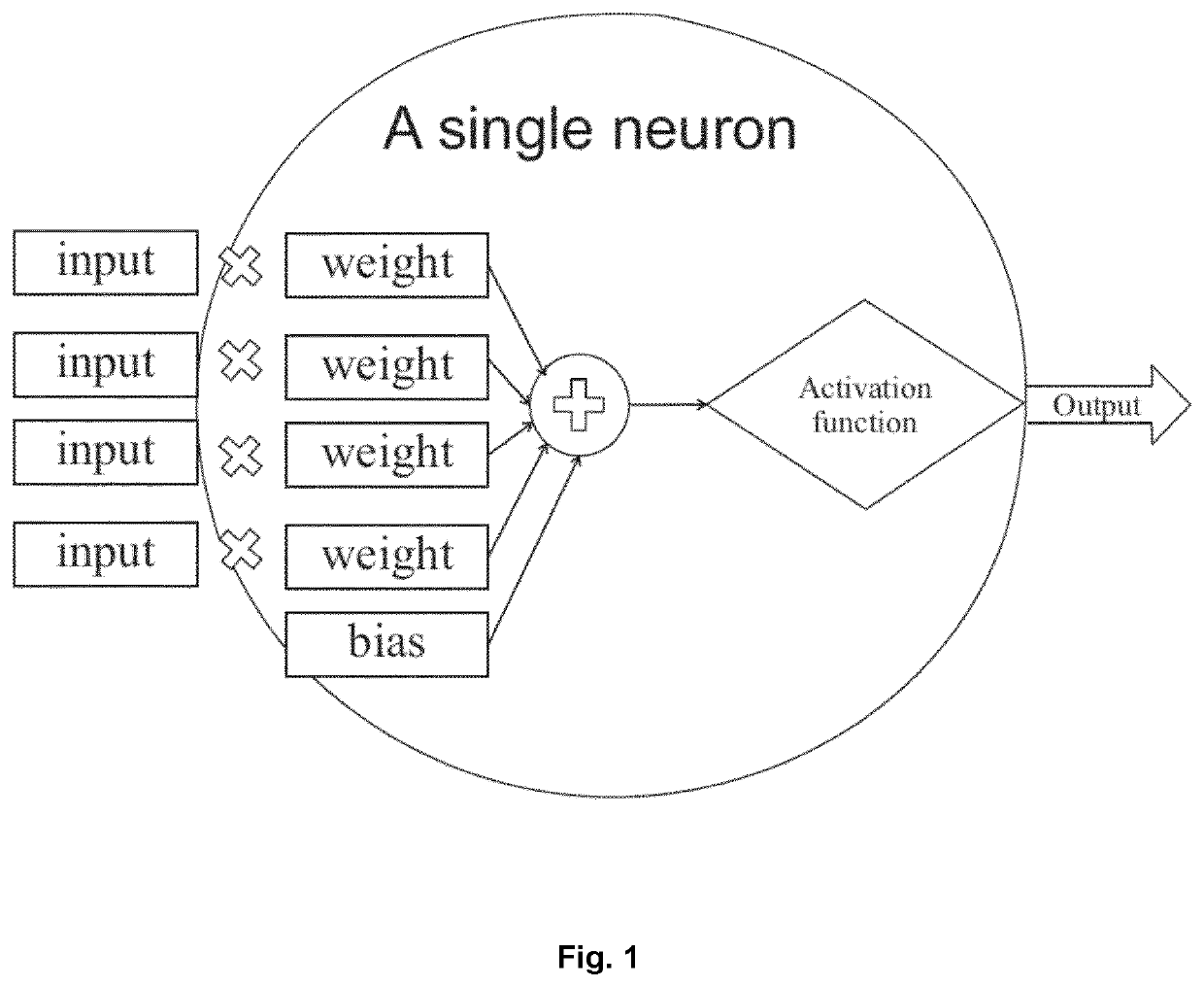Medical image analysis using machine learning and an anatomical vector
a machine learning and anatomical technology, applied in image enhancement, medical/anatomical pattern recognition, instruments, etc., can solve problems such as considerable computational effort, and achieve the effect of improving the computational efficiency of the network
- Summary
- Abstract
- Description
- Claims
- Application Information
AI Technical Summary
Benefits of technology
Problems solved by technology
Method used
Image
Examples
Embodiment Construction
[0130]FIG. 1 illustrates the structure of a neuron as part of a neural network, for example a convolutional neural network, in which input is assigned certain weights for processing by an activation function which generates the output of the neuron.
[0131]FIG. 2 describes the basic flow of the method according to the first aspect, which starts in step S21 with acquiring the patient training image data, continues to step S22 which encompasses acquisition of the atlas data, and then proceeds to acquiring the viewing direction data in step S23. On that basis, step S24 calculates the anatomical vector data, which is followed by acquisition of the label data in step S25. Finally, the anatomical indicator data is determined in step S26.
[0132]FIG. 3 illustrates the basic steps of the method according to the second aspect, in which step S31 encompasses acquisition of the individual patient image data and step 32 determines the label relation data.
[0133]FIG. 4 illustrates the basic steps of t...
PUM
 Login to View More
Login to View More Abstract
Description
Claims
Application Information
 Login to View More
Login to View More - R&D
- Intellectual Property
- Life Sciences
- Materials
- Tech Scout
- Unparalleled Data Quality
- Higher Quality Content
- 60% Fewer Hallucinations
Browse by: Latest US Patents, China's latest patents, Technical Efficacy Thesaurus, Application Domain, Technology Topic, Popular Technical Reports.
© 2025 PatSnap. All rights reserved.Legal|Privacy policy|Modern Slavery Act Transparency Statement|Sitemap|About US| Contact US: help@patsnap.com



